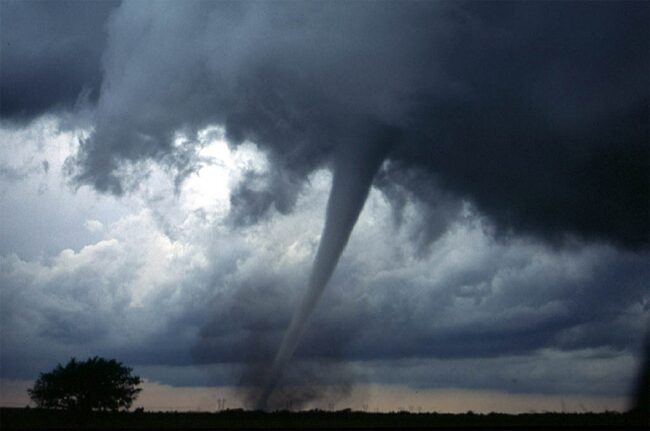Tornadoes and flesh-eating fungi; two things you would not expect to go together. Yet, following a destructive tornado in Joplin, Missouri, there was an unprecedented outbreak of the necrotising (or flesh eating), soft tissue fungus Apophysomyces trapeziformis. A recent study investigated why1.
On June 3rd 2011, a physician in Joplin noted two patients experiencing a rare A. trapeziformis fungal infection. By June 15th, thirteen patients were confirmed, all with growing tissue damage due to the infection. Physicians were left stumped. These kinds of flesh-eating fungal infections typically occur in isolated cases, after an individual is directly exposed to fungi growing in an confined area, such as a contaminated pond. How could this fungus suddenly infect multiple people in the same town? The race was on to figure out the root cause of these potentially deadly infections.
These kinds of fungal infection outbreaks can be caused by contaminated hospital equipment. However, the patients were treated at six different hospitals across the local area, making this hypothesis unlikely. Next, researchers investigated the location of each of the individuals at time of admission, to see if there was a common environmental source. Yet the patients were from a variety of disperse regions across the town.
One common factor emerged. All of the patients had been directly affected by a devastating tornado which carved a mile-wide damage path through the town several weeks previously. They had all been in inadequate shelter when it struck. The only significant risk factor for developing the infection was multiple puncture wounds. As it turns out, these wounds were from all from flying debris during the tornado. No other significant risk factors emerged, such as age or co-morbid conditions.
So was this tornado to blame for this fungal infection outbreak? As the DNA from the fungal strains were closely related, it is likely that the tornado picked up spores from just one isolated pocket of A. trapeziformis from the west side of the town. As the tornado travelled east, the spores would have been carried along with the debris, infecting the open wounds they came in contact with.
This mysterious case of tornado-transported, flesh-eating fungi caught the attention of the medical community. With this year’s tornado season underway, medical staff should be on the look-out for these rare infections in post-disaster areas.
Edited by Sarah Spence

